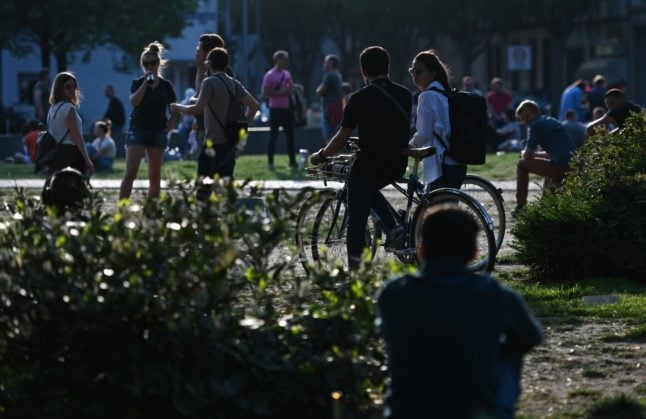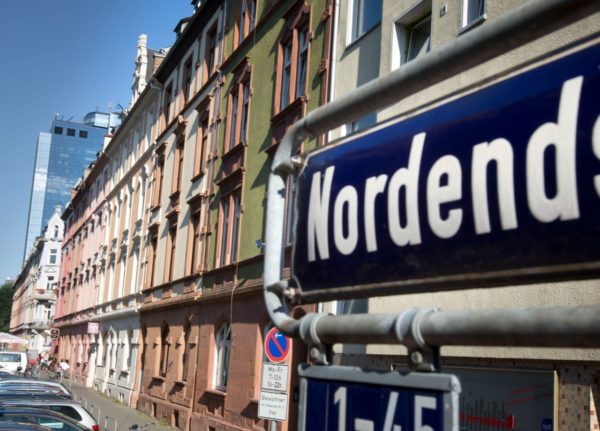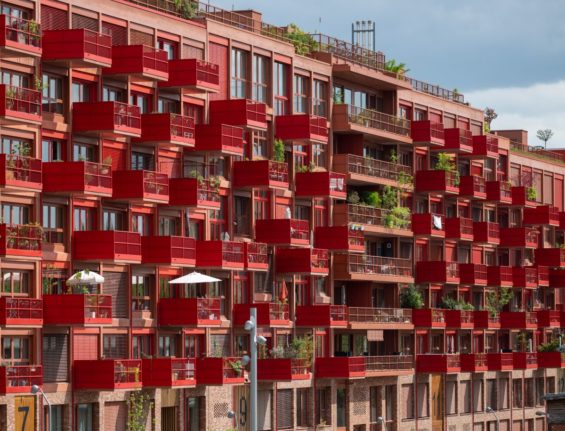If you’re moving – or have recently moved – to Frankfurt, you may still be in the process of trying to get to know the city.
Last year, the Hessian capital was named one of the most liveable cities in the world, and with a strong jobs market, lively nightlife and close proximity to stunning natural landscapes, it’s no wonder.
But while the quality of life is definitely a draw for migrants, the international feel of the city is one of its primary attractions. In fact, back in 2019, Frankfurt was named as the city with the largest foreign population compared to its size.
Of the some 780,000 residents who live in Frankfurt, almost a third (29 percent) held a foreign passport, while more than half (51 percent) had at least one foreign parent.
In such a vibrant city, you’re bound to feel this multi-cultural energy almost everywhere you go, whether you’re dining out at the best local Lebanese eatery or meeting fellow internationals at a weekly Stammtisch. But if you’re specifically looking for neighbourhoods that live up to Frankfurt’s diverse reputation, there are five that are magnets for foreigners.
READ ALSO: Is Frankfurt a good place for foreigners to live?
Gallus (16,340)
The neighbourhood in the vicinity of Frankfurt Hauptbahnhof has been undergoing something of a transformation recently – and it’s also become a hugely popular area for foreigners to find housing.
With around 16,340 international residents, Gallus boasts the largest foreigner population in Frankfurt, which could be down to its excellent transport connections, modern housing developments and burgeoning cultural scene. New flats are springing up all the time in the Europaviertel development, which is due to be finished in stages by 2025, and plenty of businesses have their offices in the neighbourhood.
People who enjoy eating out have no shortage of options in Gallus, while the Gallus Theatre is a popular local hub with a packed schedule of shows to suit families and children.
At around €13.50 per square metre on average, rental prices in Gallus surprisingly undercut the average in Frankfurt – especially for such a central location – though purchase prices are an eye-watering €7,600 per square metre.
READ ALSO: ‘A megacity on a smaller scale’: An insiders’ guide to Frankfurt
Sachsenhausen (14,950)
The buzzing neighbourhood of Sachsenhausen is one of the most popular residential areas in Frankfurt for foreigners and locals alike – and it’s no wonder. Located just south of the river, it offers a thriving cultural and arts scene with museums and live music, as well as great local eateries, traditional apple wine pubs and cosy cafes.
In contrast to the modern developments and high-rise buildings that people associate with Frankfurt, Alt-Sachsenhausen has a much more homely and traditional feel, complete with leafy cobblestone streets and quaint timber-framed houses. The walkability of the area is a definite draw, but the neighbourhood is also immensely well connected to public transport, including the U-Bahn, tram network and Südbahnhof in the south.

For families, the area stands out for its numerous play parks and green spaces, as well as the presence of local international schools and plentiful options for childcare. Every two weeks, you can find a flea market along the river bank where you can pick up a bargain or two. Each year, the string of museums dotted along the waterfront also host the bustling ‘Museumsfest’ – a major event with street food, music and discounted entry to the museums.
All of these great benefits do come at a price: rental apartments tend to cost at least €15 per square metre in Sachsenhausen, and a fair bit more if you’re close to the river.
Bockenheim (12,990)
Located on the edge of Frankfurt’s inner ring, Bockenheim can feel a bit more remote than other central neighbourhoods – but its affordable rents and bohemian flair have made it a favourite with foreigners.
A commute from the northwestern district to the city centre may take five or ten minutes longer on the train, but in exchange residents of Bockenheim enjoy a thriving arts scene and some of Frankfurt’s most beautiful parks right on their doorstep.
Much of the action in Bockenheim is centred around Leipziger Straße, a bustling shopping street that weaves through the district. Nearby, you’ll find late-night bars and cafes that are frequented by local students, but also the tranquility of the Palmengarten Botanical Gardens.
According to recent statistics, almost 13,000 internationals are based in Bockenheim, and it’s certainly a district with a multicultural feel. For families, Bockenheim is also home to the city’s oldest bilingual school – the Montessori school – and the Frankfurt International School.
Rentals in the neighbourhood tend to be priced at around €15 per square metre, but with everything from studios to penthouses available, there’s something for almost every budget.
READ ALSO: Five European cities you can reach in under five hours from Frankfurt
Nordend (11,757)
The picturesque and well-heeled neighbourhood of Nordend is a magnet for foreigners who can afford the steep cost of housing there. But for those willing to shell out a bit more for rents, the area has plenty to offer internationals.
For one, the district is home to some of the prettiest streets and boulevards in the whole of Frankfurt, lending the neighbourhood a gentler and more contemplative atmosphere than elsewhere in the banking capital.
Once the home of artists and hippies back in the 70s, nowadays you’re far more likely to find chic wine bars and sunny cafe terraces frequented by young professionals and academics from the nearby Goethe University. There are also plenty of popular leisure spots in the area such as the regal Holzhausenpark, and in summer, Friedberger Platz plays host to regular markets and open-air parties.

With so much on their doorstep, proud residents of Nordend will boast that they never have to leave the district, but when they do, most central districts of Frankfurt can be reached in minutes.
All of this does come at a hefty price tag, however, as rentals in the area tend to cost a minimum of €16 per square metre.
Griesheim (9,837)
Once disparagingly described as Frankfurt’s ‘Bronx’ after the notorious district of New York, Griesheim has brushed up its reputation significantly in recent years and is now one of the go-to neighbourhoods for foreigners.
Residents are drawn to its peaceful atmosphere and the fact that it offers the best of both worlds: a less than ten minute commute into the city centre by S-Bahn and easy access to the great outdoors.
Compared to the more central districts, the gastronomic offer may be a little more limited, but in exchange you get plenty of sports and leisure facilities and a strong local community.
READ ALSO: 9 of the best day trips from Frankfurt with the €49 ticket
Located in the west of the city on the northern banks of the Rhine, there are plenty of spots for running, cycling or enjoying a picnic on a sunny day, and the growing international community is reflected by the presence of a bilingual Kita.
Another major plus for Griesheim is the relatively affordable rents, which can be as low as €11 per square metre, making it a perfect place to find a larger property for a flat-share or family.




 Please whitelist us to continue reading.
Please whitelist us to continue reading.
Member comments